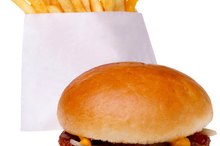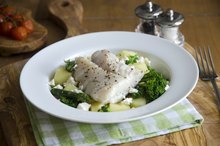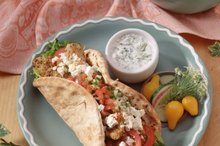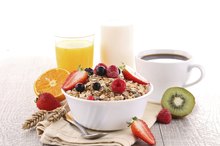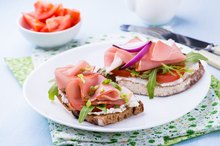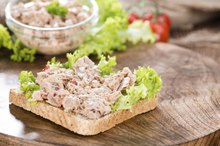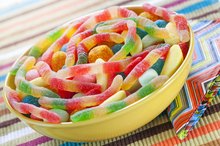What does fact checked mean?
At Healthfully, we strive to deliver objective content that is accurate and up-to-date. Our team periodically reviews articles in order to ensure content quality. The sources cited below consist of evidence from peer-reviewed journals, prominent medical organizations, academic associations, and government data.
- Center for Disease: Nutrition for Everyone: Protein
- Center for Disease: Nutrition for Everyone: Carbohydrates
The information contained on this site is for informational purposes only, and should not be used as a substitute for the advice of a professional health care provider. Please check with the appropriate physician regarding health questions and concerns. Although we strive to deliver accurate and up-to-date information, no guarantee to that effect is made.
List of Non-starchy Foods
Starch is a polysaccharide formed from long chains of glucose molecules. Straight chains of polysaccharides are known as amylose, while chains with multiple branches are called amylopectin. Foods high in starch include potatoes, cereals, grains, breads, dry beans, peas and corn. Vermicelli and pasta also contain starch. Non-starchy foods have a low percentage by body weight of complex carbohydrates.
Beef
Meat, such as beef, does not contain starch.
Beef is comprised of protein and fat. Amino acids provide the building blocks for protein. According to "On Food and Cooking," about 50 percent of the fat in beef comes in the form of saturated fatty acids, which is the least healthy fat 1.
- Meat, such as beef, does not contain starch.
- According to "On Food and Cooking," about 50 percent of the fat in beef comes in the form of saturated fatty acids, which is the least healthy fat 1.
Poultry
Is Butter on the Glycemic Index?
Learn More
Poultry is also a meat comprised of amino acids and fat, not starch. Chicken contains more polyunsaturated fat than beef does, making chicken a healthier food choice than beef.
Fish
Fish is also a protein. Darker, red colored fish like salmon contain more fat than white fish does. However, the fat in salmon is omega 3 fatty acid, which is a healthful fat.
Eggs
Bile and Fat Digestion
Learn More
Eggs are another non-starchy food. They are bundles of protein.
The whites are pure protein, while the egg yolks contain some cholesterol. They can be served fried, poached, hard boiled or scrambled.
- Eggs are another non-starchy food.
- The whites are pure protein, while the egg yolks contain some cholesterol.
Milk
Milk is a low-starch food. It is comprised of protein, fat, and sugars such as lactose. People who are lactose intolerant have difficulty digesting milk.
Skim milk has some of the fat removed. Milk is also a good source of calcium.
- Milk is a low-starch food.
- People who are lactose intolerant have difficulty digesting milk.
Cheese, Cream and Butter
Butter, cream and cheese are milk products. These foods contain protein and fat, but low starch content. They are also good sources of calcium. Cheese provides a good protein alternative to meat.
- Butter, cream and cheese are milk products.
Fruit
Fruit contains large amounts of carbohydrates, vitamins and antioxidants. When fruit ripens, its starch turns to simple sugars such as glucose and fructose. Blueberries contain vitamins and antioxidants, making them healthful treats.
Some Vegetables
**While potatoes and grains contain starch, some vegetables are non-starchy foods.
Salad greens provide good sources of vitamins and minerals, but do not contain starch. ** Other low-starch vegetables include broccoli, brussels sprouts, cauliflower, celery and tomatoes.
Consuming raw vegetables is healthier than eating processed vegetables. Raw ones have higher nutrient and fiber content and less sodium.
- While potatoes and grains contain starch, some vegetables are non-starchy foods.
- Salad greens provide good sources of vitamins and minerals, but do not contain starch.
Related Articles
References
- "On Food and Cooking"; Harold McGee: 2004
- National Diary Council: Health & Wellness
- American Diabetes Association: Non-Starchy Vegetables
Writer Bio
Bruce Smith has written professionally since 1997. Some of his publications include "Plant Physiology," "American Bee," "Cell Biology and Toxicology" and "Encyclopedia of Library and Information Science." Bruce has a Bachelor of Science in horticulture from Penn State University, and a Bachelor of Science in biology and a Master of Science in information studies from Florida State University.

